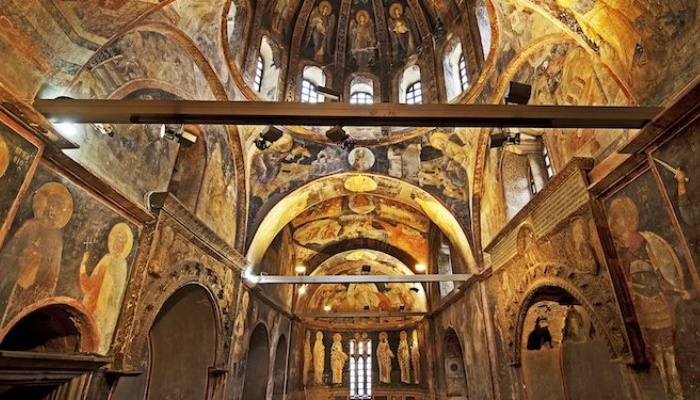Turkish President Recep Tayyip Erdoğan on Friday ordered another ancient Orthodox church that became a mosque and then a popular İstanbul museum to be turned back into a place of Muslim worship, AFP reported.
The decision to transform the Kariye Museum into a mosque came just a month after a similarly controversial conversion for the UNESCO World Heritage-recognized Hagia Sophia.
Both changes reflect Erdoğan’s efforts to galvanize his more conservative and nationalist supporters at a time when Turkey is suffering a new spell of inflation and economic uncertainty caused by the coronavirus.
But they have added to Turkey’s tensions with Greece and its Orthodox Church.
The Greek foreign ministry called the decision “yet another provocation against religious persons everywhere” by the Turkish government.
The 1,000-year-old building’s history closely mirrors that of the Hagia Sophia — its bigger neighbor on the historic western bank of the Golden Horn estuary on the European side of İstanbul.
The Holy Savior in Chora was a medieval Byzantine church decorated with 14th-century frescoes of the Last Judgement that remain treasured in the Christian world.
It was originally converted into the Kariye Mosque half a century after the 1453 conquest of Constantinople by the Ottoman Turks.
It became the Kariye Museum after World War II as Turkey pushed ahead with the creation of a more secular new republic out of the ashes of the Ottoman Empire.
A group of American art historians then helped restore the original church’s mosaics and opened them up for public display in 1958.
But Erdoğan is placing an ever greater political emphasis on the battles that resulted in the defeat of Byzantium by the Ottomans.
Turkey’s top administrative court approved the museum’s conversion into a mosque in November.
The sandy-colored structure visible today replaced one created as a part of a monastery in the fourth century when Constantinople was the new capital of the Roman Empire.
It features a minaret in one corner and small cascading domes similar to those of other grand mosques whose calls to prayer echo over Istanbul.
But inside it is filled with magnificent frescoes and mosaics that represent some of the finest examples of Byzantine art in the Christian world.
Turkey’s tumultuous efforts to reconcile these two histories form the underpinnings of the country’s contemporary politics and social life.
Opposition Peoples’ Democratic Party (HDP) lawmaker Garo Paylan called the transformation “a shame for our country.”
“One of the symbols of our country’s deep, multicultural identity and multi-religious history has been sacrificed,” he said in a tweet.


